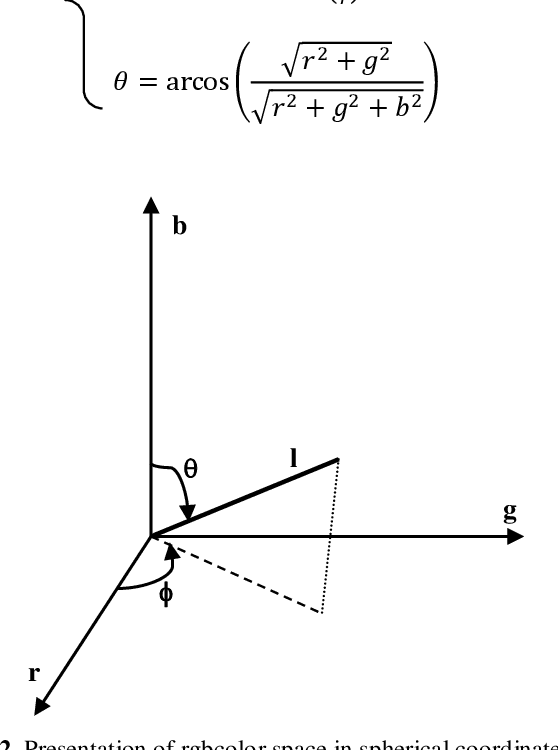Karim Afdel
Enhancing road signs segmentation using photometric invariants
Oct 26, 2020

Abstract:Road signs detection and recognition in natural scenes is one of the most important tasksin the design of Intelligent Transport Systems (ITS). However, illumination changes remain a major problem. In this paper, an efficient ap-proach of road signs segmentation based on photometric invariants is proposed. This method is based on color in-formation using a hybrid distance, by exploiting the chro-matic distance and the red and blue ratio, on l Theta Phi color space which is invariant to highlight, shading and shadow changes. A comparative study is performed to demonstrate the robustness of this approach over the most frequently used methods for road sign segmentation. The experimental results and the detailed analysis show the high performance of the algorithm described in this paper.
Improving Road Signs Detection performance by Combining the Features of Hough Transform and Texture
Oct 13, 2020Abstract:With the large uses of the intelligent systems in different domains, and in order to increase the drivers and pedestrians safety, the road and traffic sign recognition system has been a challenging issue and an important task for many years. But studies, done in this field of detection and recognition of traffic signs in an image, which are interested in the Arab context, are still insufficient. Detection of the road signs present in the scene is the one of the main stages of the traffic sign detection and recognition. In this paper, an efficient solution to enhance road signs detection, including Arabic context, performance based on color segmentation, Randomized Hough Transform and the combination of Zernike moments and Haralick features has been made. Segmentation stage is useful to determine the Region of Interest (ROI) in the image. The Randomized Hough Transform (RHT) is used to detect the circular and octagonal shapes. This stage is improved by the extraction of the Haralick features and Zernike moments. Furthermore, we use it as input of a classifier based on SVM. Experimental results show that the proposed approach allows us to perform the measurements precision.
A New Approach of Learning Hierarchy Construction Based on Fuzzy Logic
Dec 08, 2014



Abstract:In recent years, adaptive learning systems rely increasingly on learning hierarchy to customize the educational logic developed in their courses. Most approaches do not consider that the relationships of prerequisites between the skills are fuzzy relationships. In this article, we describe a new approach of a practical application of fuzzy logic techniques to the construction of learning hierarchies. For this, we use a learning hierarchy predefined by one or more experts of a specific field. However, the relationships of prerequisites between the skills in the learning hierarchy are not definitive and they are fuzzy relationships. Indeed, we measure relevance degree of all relationships existing in this learning hierarchy and we try to answer to the following question: Is the relationships of prerequisites predefined in initial learning hierarchy are correctly established or not?
* 58-66
A tool for implementation of a domain model based on fuzzy relationships
Dec 08, 2014



Abstract:The domain model is one of the important components used by adaptive learning systems to automatically generate customized courses for the learners. In this paper our contribution is to propose a new tool for implementation of a domain model based on fuzzy relationships among concepts. This tool allows the experts and teachers to find the best parameters in order to adapt the learners's differences.
 Add to Chrome
Add to Chrome Add to Firefox
Add to Firefox Add to Edge
Add to Edge